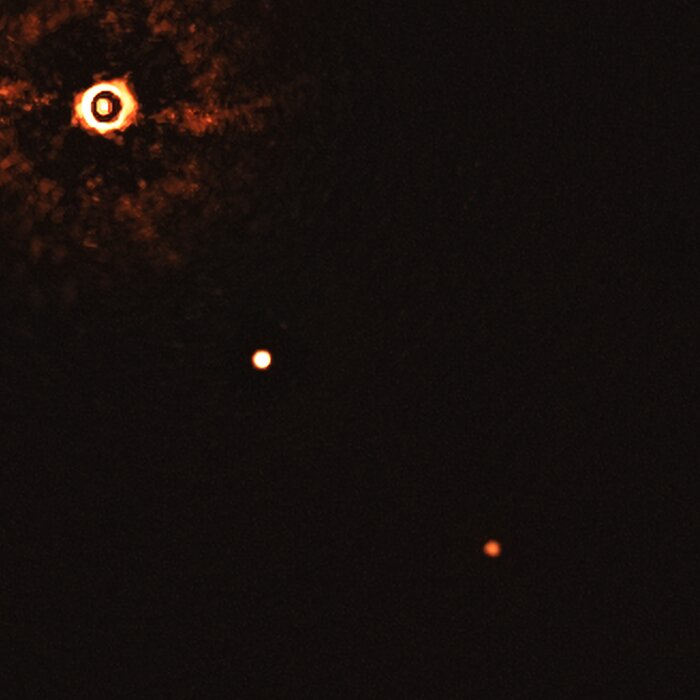MI weekly selection #386

The image was captured by blocking the light from the young, Sun-like star (on the top left corner) using a coronagraph, which allows for the fainter planets to be detected. The bright and dark rings we see on the star’s image are optical artefacts. The two planets are visible as two bright dots in the centre and bottom right of the frame.
Telescope captures image of exoplanets orbiting star
The Very Large Telescope in Chile has captured a direct image of a pair of exoplanets orbiting a star that’s similar to our own sun. “Even though astronomers have indirectly detected thousands of planets in our galaxy, only a tiny fraction of these exoplanets have been directly imaged,” said study co-author Matthew Kenworthy.
Birds breeding for shorter period as temperature rises
Birds are breeding earlier in the spring and for a shorter time, which could increase competition for food and threaten survival. The average breeding period for birds in Finland was 1.7 days shorter in 2017 than in 1975, while the average temperature rose by 0.8 degrees Celsius, suggesting that global warming is narrowing birds’ breeding windows.
COVID-19 lockdowns result in less seismic noise
Widespread lockdowns around the globe due to COVID-19 have lowered Earth’s amount of human-driven seismic noise. “Our study uniquely highlights just how much human activities impact the solid Earth, and could let us see more clearly than ever what differentiates human and natural noise,” says Stephen Hicks, a study author.
Art can be an important tool for mental health
People can use art as a nonverbal therapy to express themselves when it’s difficult to do so through words, says Drexel University associate professor Girija Kaimal. “My colleagues and I are among a growing group of art therapy researchers working to strengthen the scientific evidence that art can heal and to better understand how and why it does so,” Kaimal writes.
Better thinking, memory ward off Alzheimer’s
Researchers found that older adults who had better thinking and memory test scores at baseline had lower odds of developing cognitive problems after 14 years, regardless of amyloid plaque accumulation associated with Alzheimer’s disease in the brain, while those with the APOE e2 gene variant had greater amyloid buildup resistance than those without APOE e2. The findings also showed more than tenfold better thinking skill retention, regardless of amyloid accumulation, among those who never smoked, but higher odds of amyloid buildup among those with elevated pulse pressure scores.